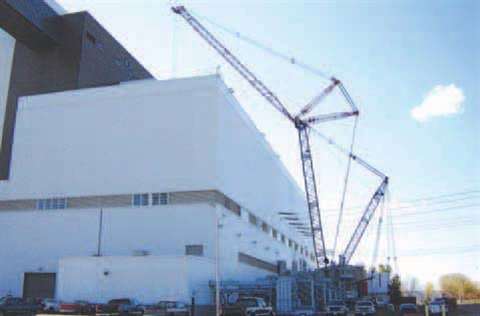Refined rigging
25 April 2008

Late last year a prospective client presented Barnhart with a rigging plan to extract, replace and install two large-scale feedwater heaters in a coal-fired power plant in Iowa, US. While the plan was viable the engineering team assessed how they might be able to complete the job more cost-effectively.
“Our plan reduced the cost of the job and allowed us to be more competitive,” says Alan Barnhart, president. By changing the original plan, Barnhart could use a smaller crane than originally specified.
Weighing approximately 80 tons (73 tonnes) each, the new feedwater heaters were 40 feet (12 m) long and 6 feet (1.8 m) in diameter. The old heaters that needed to be extracted from the building were heavier and shorter. The heaters were originally placed in the building during its construction, when the roof was off but, for several reasons, the roof could not be opened up for the replacement.
The original plan developed by the customer would have required a much higher capacity crane, one that would need about 80 truckloads to transport. “We had a large enough crane to do what they were proposing,” Barnhart explains, “but that was a very big crane with a very big price, so we asked the customer if we could propose some alternatives. We had our TC 3000 close to the site, and after measuring the building and realising we could move the heaters through the building, we came up with a system to bring the heaters out of the wall.”
Being closer to the building would allow Barnhart to use its 800 ton (726 tonne) capacity Demag TC 3000 lattice boom truck crane. To be moved out of (and subsequently into) the building, the heaters had to follow a circuitous path through the building to the hole in the wall from where they were extracted (and where the new ones were placed). Inconsistent flooring in the building meant Barnhart engineers developed a system to spread the load. “There were many tight clearances to deal with, in some cases two inches or less,” Barnhart says. “Once inside the building, we would use two systems, a light slide system and an air caster system.”
While the plan was less expensive, it was more tedious. “We had to rotate the heaters in some very tight spaces,” says Barnhart. The team was especially proud of the creativity and ingenuity used in the rigging plan. “This job required innovation and adapting a rigging system to accomplish something we had never done before and that saved the customer time and money,” says Barnhart. •




